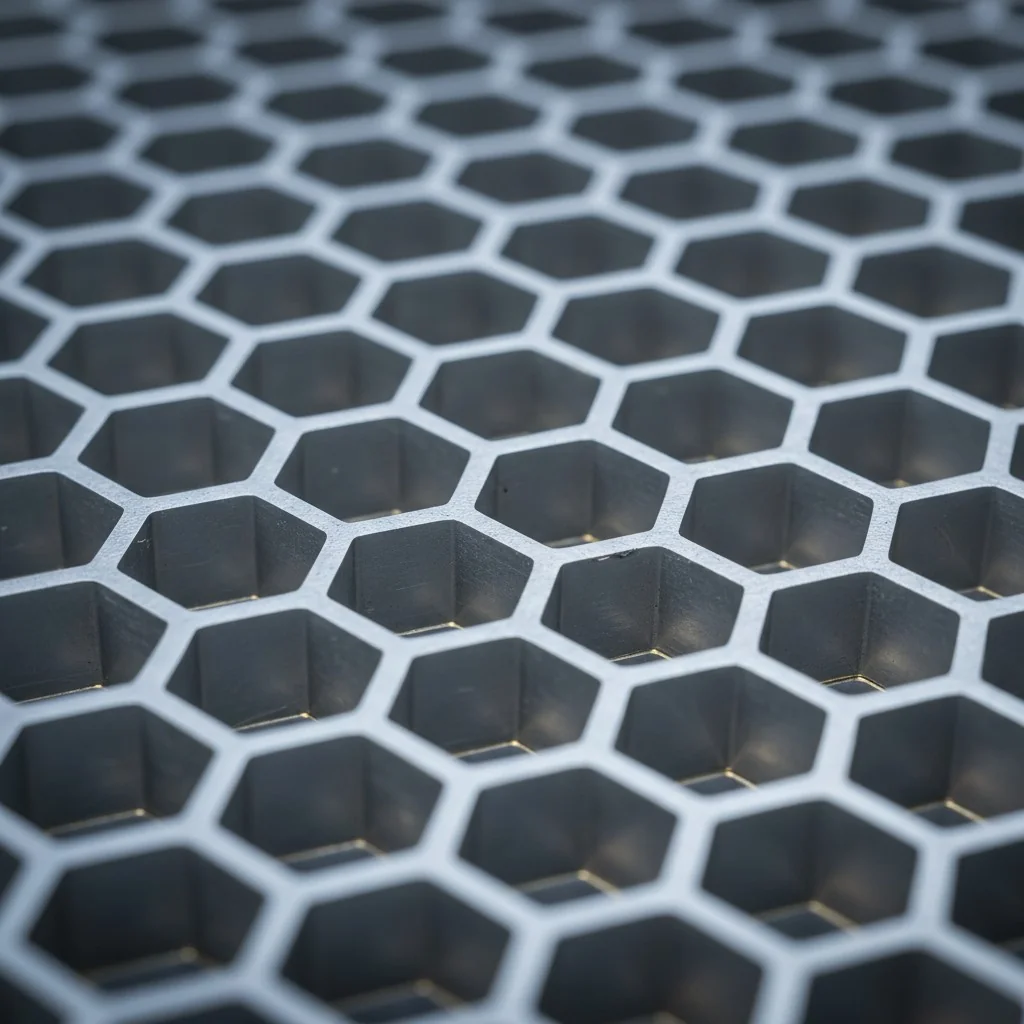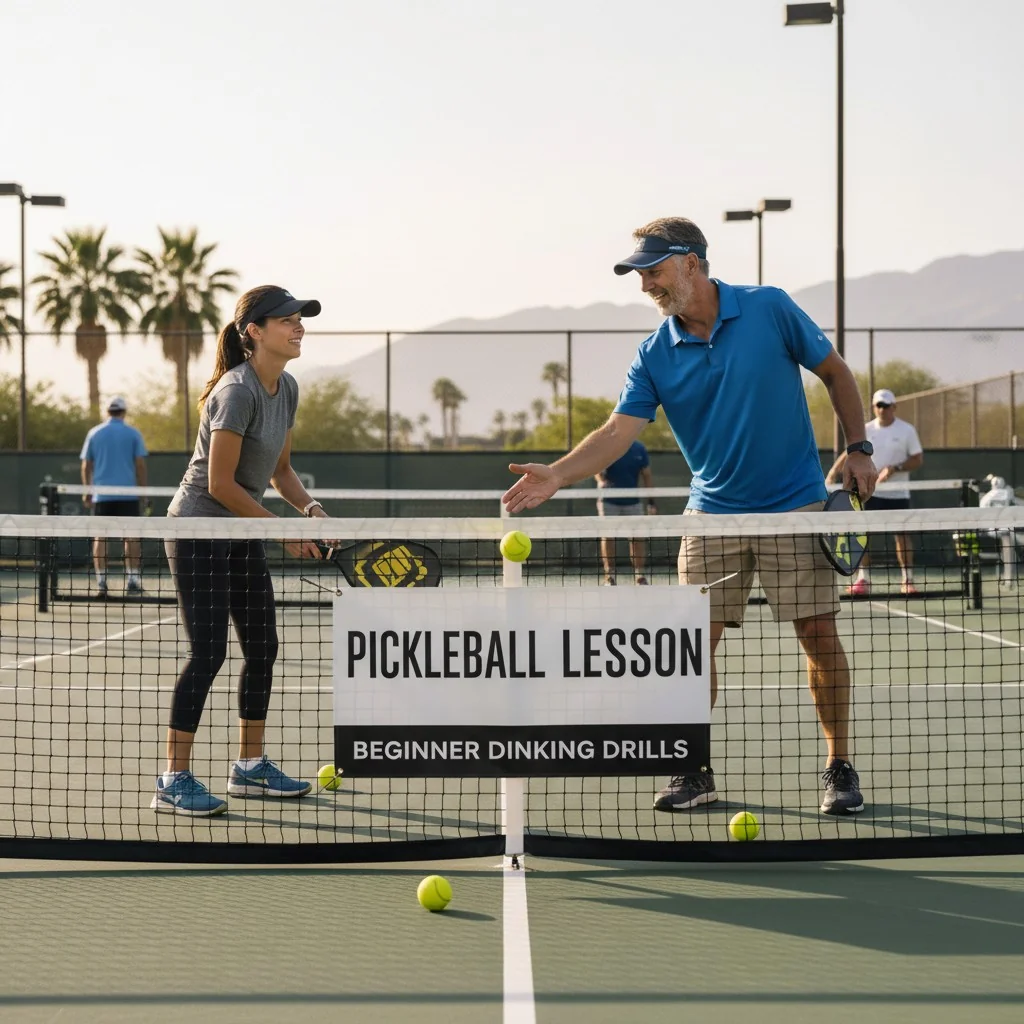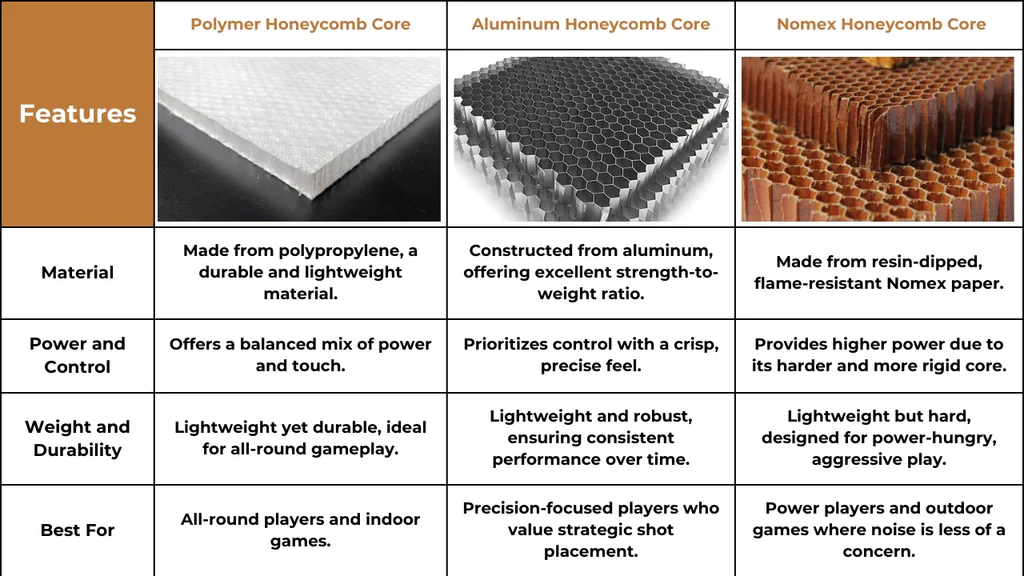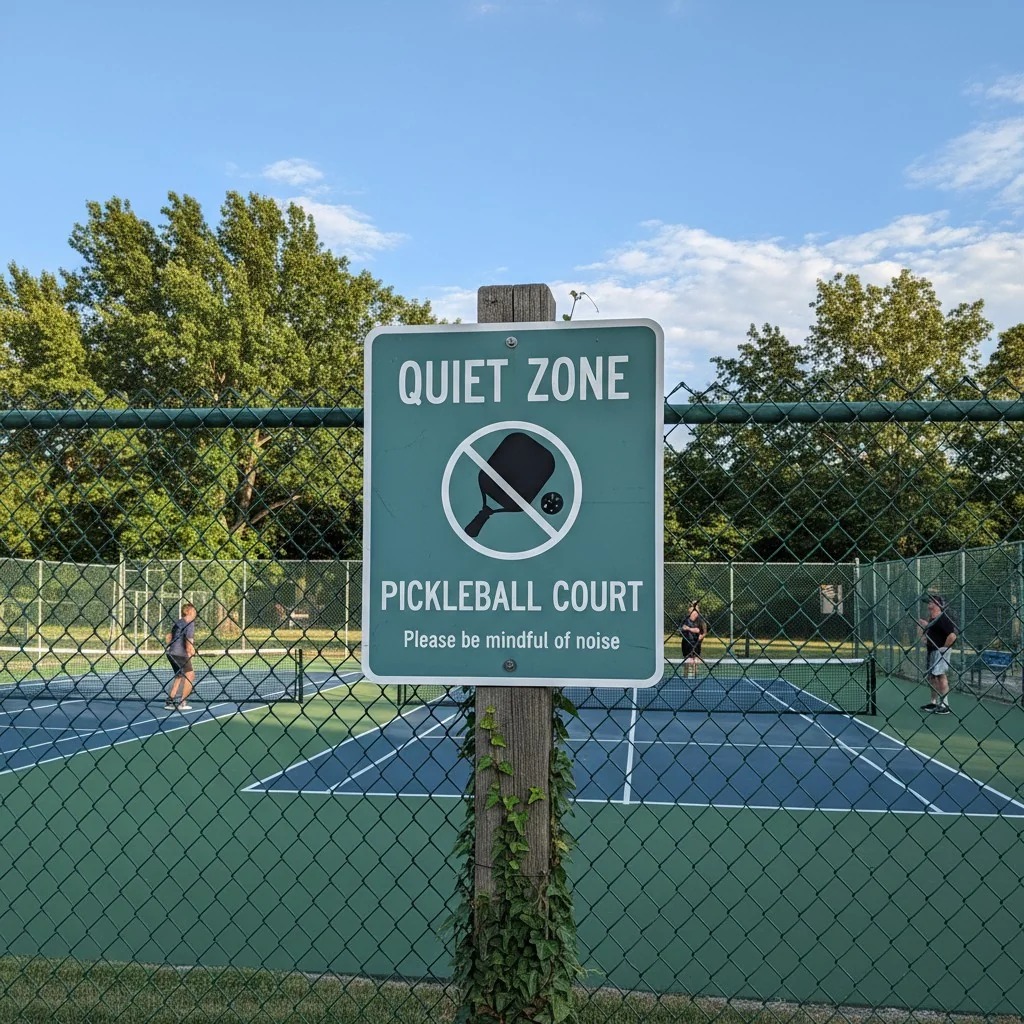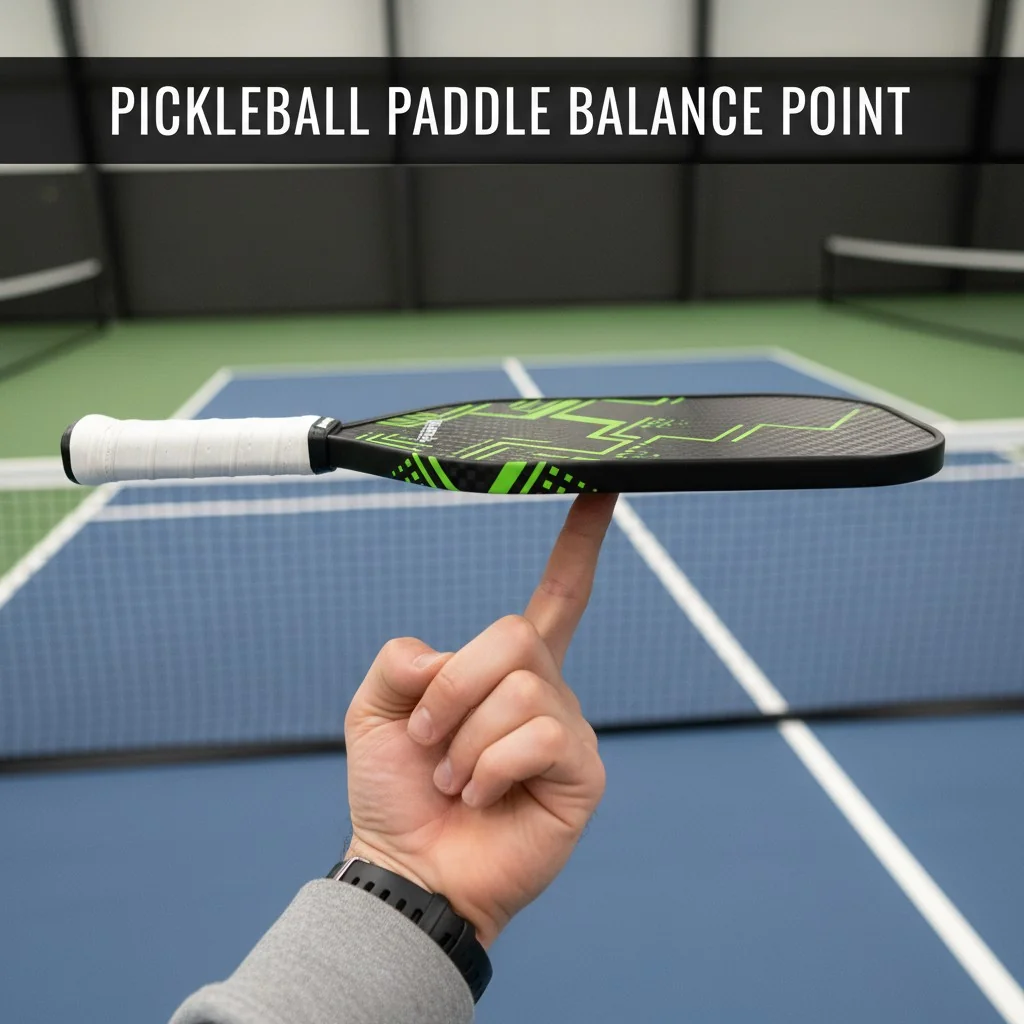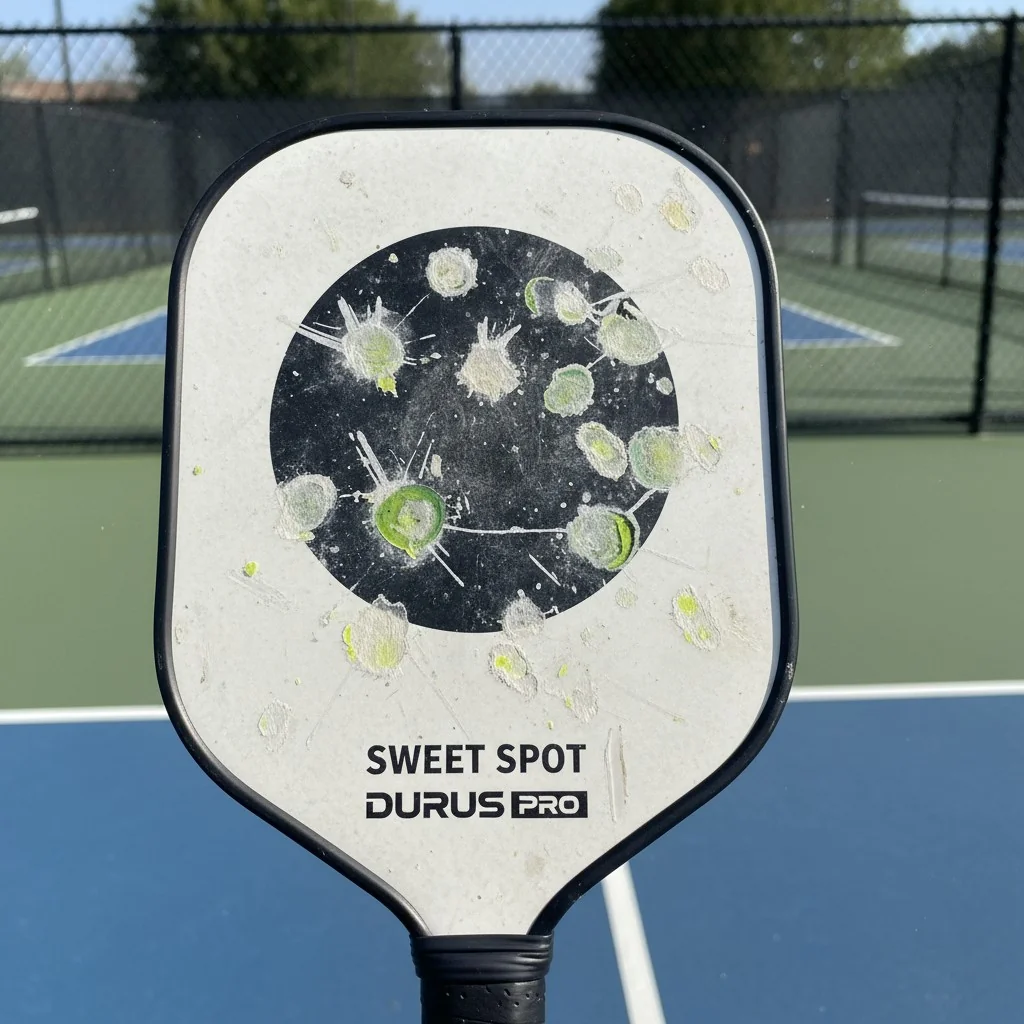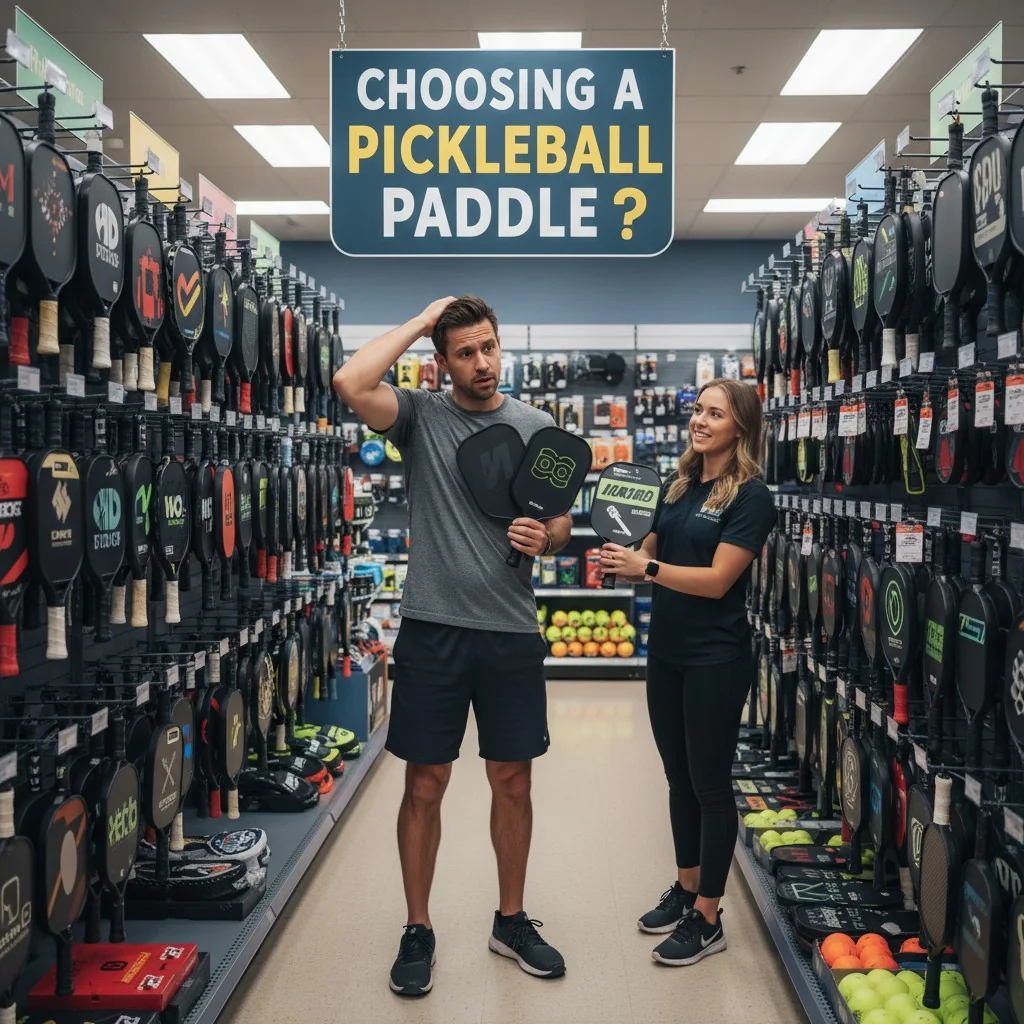Choosing a paddle core feels overwhelming. You hear about aluminum, but is it a gimmick or a game-changer? I’ll help you decide if it’s right for your brand.
Yes, aluminum paddles are good for players who prioritize control, a soft touch, and maneuverability over power. They help prevent over-hitting at the kitchen but are louder and less powerful than polymer cores. They are a niche choice for finesse players1.
In my years in the pickleball industry, from the factory floor to running my own trading company, I’ve seen every type of paddle core. Aluminum has a specific place. Let’s break down exactly what that is, so you can design and market paddles that truly delight your customers. Understanding these materials is the first step to building a successful brand, just like Maggie and Grace did with Recess Pickleball by focusing on their vision.
Aluminum core paddles are the quietest option available.False
Aluminum is louder than polymer, though often quieter than Nomex. Polymer is the quietest common core.
Aluminum cores provide the least power among common core materials like polymer and Nomex.True
Data and player feedback confirm that aluminum has the weakest rebound, making it a control-oriented core.
Are Aluminum Pickleball Paddles Good for Beginners or Control Players?
Your new players are hitting every dink out. They need more control, but you don’t want to sacrifice feel. Is aluminum the answer for them?
Aluminum is excellent for control-focused players of any level. Its soft feel and low power help with dinks and resets. However, most beginners benefit more from a balanced polymer paddle that offers a better blend of power and control as they develop their game.
I often see new brands trying to capture the beginner market. It’s a huge opportunity. The question is, what paddle do you give them? Aluminum seems like a good choice on paper because it is very forgiving. The core absorbs a lot of energy, so it’s harder to pop the ball up at the net. This can build a beginner’s confidence in their soft game very quickly. I’ve seen players who constantly struggled with over-hitting suddenly find their touch with an aluminum paddle.
However, there’s a trade-off. Pickleball isn’t just about dinking. As beginners improve, they need to learn how to hit drives and serves with pace. An aluminum core makes this harder. They have to generate all the power themselves. This is why I usually recommend a polymer core2 for a brand’s flagship beginner model. It provides a much more balanced experience. It has enough control for the kitchen but enough pop to help them learn the power side of the game. Think of aluminum as a specialty tool for the control artist, not the all-purpose tool for the apprentice.
Aluminum paddles are the best choice for all beginners.False
While good for control, most beginners are better served by all-around polymer paddles that help them develop both control and power.
The low power of aluminum cores can help players reduce pop-ups at the kitchen line.True
The core absorbs more impact energy, resulting in a softer response that is more forgiving for dinks and resets.
Aluminum vs. Polymer vs. Nomex: Which Core Matches Your Playing Style?
You’re designing a paddle line but don’t know which core to use. This choice defines your paddle’s feel and performance. Let’s match the material to the player.
Choose aluminum for maximum control and a soft feel. Pick polymer for the best all-around balance of power, control, and quietness—it’s the industry standard. Select Nomex for the highest power and pop, but be prepared for a loud, firm feel.
When I was on the factory floor, I handled these raw materials every day. They feel completely different, and that translates directly to the court. Understanding this is key for any brand. You’re not just selling a paddle; you’re selling a specific playing experience. A mistake I see brands make is not aligning their core choice with their target audience.
Here’s a simple breakdown I give my clients to help them plan their product lines:
| Core Type | Typical Weight | Power | Control/Touch | Noise | Best For |
|---|---|---|---|---|---|
| Aluminum | 6.5–9.0 oz | Lowest | Highest | High | Finesse players, kitchen control |
| Polymer (PP) | 7.5–8.5 oz | Medium | Medium-High | Lowest | All-around players, most beginners |
| Nomex | 7.0–8.2 oz | Highest | Lowest | Highest | Power hitters, aggressive players |
As you can see, there’s no single "best" core. A brand focused on fun and approachability would likely lean towards polymer. A brand targeting competitive tournament players might offer a Nomex option. Aluminum fits a niche for players who say, "I don’t need more power, I need to stop hitting my dinks long." Your job is to decide which player you’re serving.
Polymer cores offer the best balance of power, control, and low noise.True
Polymer is the industry consensus for all-around performance, making it the most popular choice for the majority of players and brands.
Nomex is the softest and quietest paddle core.False
Nomex is the firmest, loudest, and most powerful core, known for its distinct 'pop' sound and feel.
Do Aluminum Paddles Have Enough Power? What to Expect in Real Play.
Your customers are asking for a paddle with "pop." You’re considering an aluminum core. Will it deliver the power they expect, or will it fall flat?
No, aluminum paddles do not have much power. They have the lowest power output of all common cores. Players must generate their own pace with a faster, fuller swing. Expect less pop on drives, serves, and overheads compared to polymer or Nomex paddles.
Let’s be direct: if a player’s game is built around powerful drives from the baseline, an aluminum paddle is the wrong choice. I’ve tested hundreds of paddles, and the difference is not subtle. When you hit the ball with a polymer or Nomex paddle, you feel the ball "jump" off the face. With aluminum, the feeling is much more muted. It feels like the paddle is absorbing the hit.
This is what we call a "control-oriented" response.
What this means in a real game:
- Drives: You will need to swing harder and use more of your body to get the same pace as you would with a polymer paddle.
- Serves: Deep, powerful serves are more difficult. You’ll rely more on placement and spin.
- Put-Aways: Finishing a point with a hard volley or overhead requires precise timing and a full motion. The paddle won’t do the work for you.
For a brand, this is a marketing challenge and an opportunity. You cannot market an aluminum paddle as a power paddle. You will lose customer trust. Instead, you market it honestly as a "finesse" or "touch" paddle. It’s for the player who wins with strategy, not brute force.
Aluminum paddles are ideal for players who rely on powerful serves and drives.False
Aluminum cores absorb energy and have low rebound, making them the least powerful option. They are not suited for a power-based game.
Players using aluminum paddles need to generate more of their own power through swing speed.True
Because the core provides minimal 'pop,' the player's swing mechanics are the primary source of power for drives and serves.
How Loud Are Aluminum Paddles? Noise Rules and Court Etiquette.
You’ve found the perfect core for control, but now you hear it’s loud. Will your customers get kicked off the court for using your paddle?
Aluminum paddles are noticeably louder than polymer paddles. Their sound is a higher-pitched "ping" compared to the dull "thud" of polymer. This can be an issue in noise-restricted communities or clubs, making polymer a safer choice where sound is a concern.
Noise is a bigger deal in pickleball than in any other sport I know. I have clients in the USA, especially in places like Florida and Arizona, who say noise is the #1 complaint they deal with. As a brand, you must take this seriously.
Here is the general noise ranking from loudest to quietest:
- Nomex: The original core. It’s known for a very loud, sharp "crack." Many communities have banned these paddles.
- Aluminum: Produces a distinct metallic "ping." It’s not as loud as Nomex, but it’s much more audible than polymer and can still violate local noise rules.
- Polymer: This is the quietest core. It has a low-frequency sound that doesn’t travel as far. This is why it has become the standard in most new paddles.
When you are developing a paddle, think about where it will be sold and used. If you are targeting communities with strict HOAs or public courts near homes, an aluminum core paddle could be a tough sell. You must be transparent in your marketing. Labeling a paddle as "quiet-rated" is a huge selling point, and you can only do that with polymer.
Aluminum paddles are the quietest core material.False
Polymer cores are the quietest. Aluminum is louder than polymer, and Nomex is typically the loudest of all.
Paddle noise can be a deciding factor for players in communities with sound restrictions.True
Many clubs and neighborhoods have rules against loud paddles, making quieter polymer cores a safer and more popular choice.
Weight, Balance, and Swing Speed: Why Aluminum Can Feel Quicker in Hand.
A customer picks up two 8.0 oz paddles. One is aluminum, one is polymer. They swear the aluminum one feels lighter. Are they imagining it?
No, they are not. Aluminum paddles often feel quicker or more "head-light." Even at the same static weight as a polymer paddle, the balance point can be closer to the handle. This reduces swing weight3, making the paddle easier to maneuver in fast hand battles at the net.
In the factory, we measure two types of weight: static weight and swing weight. Static weight is just the number on the scale (e.g., 8.0 oz). Swing weight is how heavy the paddle feels when you swing it. This is affected by where the weight is distributed.
Static Weight vs. Swing Weight
- Head-Heavy: More weight is distributed towards the top of the paddle. This gives you more power and plow-through on drives but makes the paddle feel slower in your hands. Many polymer power paddles are slightly head-heavy.
- Head-Light (or Handle-Biased): More weight is near the handle. This makes the paddle feel much quicker and easier to maneuver. This is common in aluminum paddles.
This quick, maneuverable feel is one of aluminum’s biggest advantages. For players who spend most of their time at the non-volley zone, this can be a game-changer. It allows for faster reactions during intense dink rallies and hand battles. The trade-off is a loss of stability and power against hard-hitting opponents. A head-light paddle gets pushed around more. As a brand, you can market this as a "quick hands" or "fast reaction" paddle.
A paddle's swing weight is more important for on-court feel than its static weight.True
Swing weight determines how heavy a paddle feels to maneuver, affecting reaction speed and power, whereas static weight is just its total mass.
All 8.0 ounce paddles feel the same to swing.False
Paddles with the same static weight can have different balance points, leading to very different swing weights and on-court feel.
Aluminum Paddle Durability and Sweet Spot: What the Data and Players Say.
You want to market your aluminum paddle as having a huge sweet spot4 and great durability. But is that true, or just marketing hype?
Claims about the sweet spot and durability of aluminum paddles are mixed. While the aluminum honeycomb structure5 is inherently strong, real-world durability depends more on the face material and edge guard. Some brands claim a large sweet spot, but many players find it smaller and less forgiving than modern thick-core polymer paddles.
This is where I advise my clients to be very careful. The "sweet spot" is one of the most subjective terms in pickleball.
The Sweet Spot Debate
- The Marketing Claim: Some guides say aluminum’s structure creates a consistent response across the face, leading to a large sweet spot.
- The On-Court Reality: From my experience, and from talking to countless players, the "pop" on an aluminum paddle drops off significantly outside the center. Compared to a 16mm thick polymer paddle, which feels forgiving almost everywhere, an aluminum paddle can feel "dead" on off-center hits. The lack of power makes these mishits even more noticeable.
Durability Concerns
The aluminum core itself is very durable. It doesn’t break down like some foam cores can. However, a paddle’s lifespan is usually determined by other factors. The face can develop dead spots, the surface texture can wear down (reducing spin), or the edge guard can come loose. So, while the core is tough, you can’t claim the entire paddle is indestructible. Your choice of face material6 and your manufacturing quality control are far more important for overall durability.
Aluminum paddles have the largest and most forgiving sweet spot in pickleball.False
This is a common marketing claim, but many players and tests show that modern thick-core (16mm+) polymer paddles offer a larger, more consistent, and more powerful sweet spot.
A paddle's overall durability is determined by its core, face material, and edge guard construction, not just the core alone.True
The core is just one component. The face material can lose texture or pop, and the edge guard is often the first point of failure.
Face Materials on Aluminum Cores (Fiberglass, Composite): What Changes in Feel and Spin?
You’ve decided on an aluminum core for control. But what face do you put on it? Does it even make a difference?
Yes, the face material dramatically changes an aluminum paddle’s performance. A fiberglass face adds power and "pop," while a composite or graphite face maintains a softer, more controlled feel. The face material is a critical choice for tuning the paddle’s final characteristics.
Thinking the core is all that matters is a rookie mistake. The face material is your opportunity to fine-tune the paddle’s performance. When I work with brands, we spend a lot of time testing different core and face combinations.
Here’s how different faces interact with an aluminum core:
- Aluminum Core + Fiberglass Face: Fiberglass (also called composite) is a flexible and powerful material. Pairing it with an aluminum core is a way to get some power back. The fiberglass face will provide more pop on contact, making the paddle feel livelier than one with a graphite face. This is a good hybrid option for a player who wants control but doesn’t want to sacrifice all power.
- Aluminum Core + Graphite/Carbon Fiber Face: Graphite and carbon fiber faces are very stiff and thin. They provide excellent feedback and control. When you pair a graphite face with an aluminum core, you are creating the ultimate control paddle. The feel will be very soft, and the response will be very predictable. This combination is for the true touch player who values placement above all else.
The face material also determines the spin potential. A raw carbon fiber face, for example, can add significant spin.
The face material of a paddle has little effect on its performance.False
The face material is critical. It significantly impacts power, control, and spin. A fiberglass face adds pop, while a carbon fiber face enhances control and feel.
Pairing a fiberglass face with an aluminum core can add power to a control-oriented paddle.True
Fiberglass is a more flexible and powerful face material, which helps compensate for the low power output of the aluminum core, creating a more balanced paddle.
Buying Guide: Who Should Avoid Aluminum—and What to Buy Instead?
You want to give your customers clear advice. So, who is the aluminum paddle NOT for, and what should they choose instead?
Players who prioritize power, play in noise-sensitive areas7, or want the best all-around performance should avoid aluminum. These players will be much happier with a polymer core paddle, which offers a superior blend of power, control, and quiet performance.
Helping a customer avoid the wrong paddle is just as important as helping them find the right one. It builds trust. Here is a simple checklist I use to steer people away from aluminum when it’s not a good fit.
Avoid Aluminum If:
- You are a power player: If your game is built on hard drives and aggressive serves, you need a core that helps you.
- What to buy instead: A Nomex core paddle for maximum power, or a 13-14mm polymer paddle with a fiberglass face for a great blend of pop and forgiveness.
- You play in a "Green Zone": If your club or community has strict noise rules, an aluminum paddle is a risky choice.
- What to buy instead: A 16mm thick-core polymer paddle. These are the quietest paddles on the market and the safest choice for noise-sensitive areas.
- You want one paddle that does everything well: If you’re a beginner or intermediate player looking for a versatile paddle to grow with, aluminum is too specialized.
- What to buy instead: A mid-weight (7.8-8.2 oz) polymer paddle with a carbon fiber or composite face. This is the industry standard for a reason—it offers the best all-around performance.
Polymer core paddles are the best choice for players in noise-restricted communities.True
Polymer is the quietest common core material, making it the go-to recommendation for players and brands concerned with noise regulations.
Aluminum paddles are the best choice for power hitters.False
Aluminum is the least powerful core. Power hitters should choose Nomex or power-focused polymer paddles.
Conclusion
Choose aluminum for elite control and a soft touch if noise is no issue. For a balanced, versatile, and quiet paddle that suits most players, polymer is the clear winner.
References
-
Learn about finesse players and the paddles that best suit their playing style. ↩
-
Discover why polymer core paddles are often recommended for beginners and all-around players. ↩
-
Understanding swing weight can help players select paddles that feel right for their style. ↩
-
Understanding the sweet spot can help players choose paddles that enhance their game. ↩
-
Explore how aluminum honeycomb structures enhance paddle performance and durability. ↩
-
Learn how different face materials can change the feel and playability of paddles. ↩
-
Explore the implications of noise-sensitive areas on paddle choice and community play. ↩


